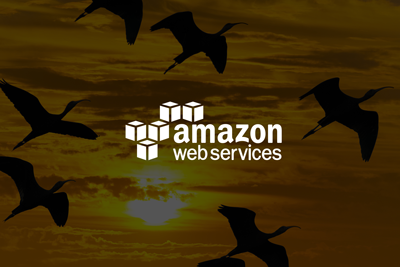 An increasing number of organizations are moving their workloads to the public cloud. A recent report about cloud adoption suggests spending in this area will reach double-digit growth in 2017 alone. The main driver behind migrating to AWS, Google Cloud Platform, and others is a compelling business event. A company may “want to go” because it has identified a clear Return on Investment (ROI). A company may “need to go” because of a strategic imperative. Regardless of the motivation, traditional enterprises may face challenges with migrating from traditional managed hosting to Amazon Web Services if they lack specific AWS knowledge or skills.
An increasing number of organizations are moving their workloads to the public cloud. A recent report about cloud adoption suggests spending in this area will reach double-digit growth in 2017 alone. The main driver behind migrating to AWS, Google Cloud Platform, and others is a compelling business event. A company may “want to go” because it has identified a clear Return on Investment (ROI). A company may “need to go” because of a strategic imperative. Regardless of the motivation, traditional enterprises may face challenges with migrating from traditional managed hosting to Amazon Web Services if they lack specific AWS knowledge or skills.
In a significant departure from dedicated managed hosting, doing things in the cloud relies heavily on automation. You can control, monitor, and manage complex systems in programmatic ways unheard of in most on-premise environments. Most important for retailers is the ability to scale during holiday seasons and other peak promotional periods. Compute capacity can be adjusted in direct response to actual demand and costs can be more tightly controlled in the public cloud setting. You can easily spin up a test or development environment only when needed and shut it down again shortly thereafter. The pay-as-you-play model helps companies get the most benefit from every dollar spent. Automation encourages standardization and enables fast deployment. In the competitive world of online commerce, for example, first-to-market is very important.
Even when IT teams acknowledge the benefits of cloud and are ready to move, there can be challenges with the migration effort. Let’s explore some of these considerations.
Adjusting to the New Reality
Traditional IT shops usually have less exposure or experience with public cloud offerings. Therefore, AWS managed services providers play a key role in helping companies understand, implement, and succeed in the cloud space. Without this guidance, the result of migrating to AWS or other cloud solutions may end up being more costly and complex than it was before the move.
Security
Having mission-critical data residing in a public cloud environment can be daunting for some, although this concern has decreased significantly during the past few years. The majority of providers adhere to strict compliance protocols and invest heavily in physical security. Given the resources they have, these providers can offer higher levels of security than most companies can achieve in-house. It’s important to note that although these service providers maintain the security of the cloud, you are responsible for security in the cloud. This is a subtle but extremely important distinction. Any migration effort must include strategies to maintain, if not strengthen, your security posture.
Apprehension
People accustomed to, or heavily invested in their own on-premise or co-located environments, may be hesitant to embrace migrating to AWS. How are you preparing these folks for the change? Will they receive suitable training to help them tackle a new set of challenges? There’s a human element to any application migration that must be addressed with careful planning, attention to detail and a well-executed deployment.
Options for Migrating to AWS
Solution architects have several tried and true strategies from which to choose from when migrating an application to the cloud. Here are the most common options:
1. Rehost
Also known as the lift-and-shift approach, this action is to simply redeploy applications in a different environment. Because there are no changes made to the application infrastructure, this is often the fastest cloud migration solution. Some benefits of the cloud, however, may not be fully realized in this scenario.
2. Refactor
Refactoring involves restructuring computer code and, in some cases, how it’s developed. This often results in an application composed of several independent modules, some of which can be replaced with cloud-native features. While you gain from the benefits of cloud innovation, there’s a risk of vendor lock-in. And, refactoring eCommerce platforms or other monolithic applications into a more nimble, service-oriented architecture can be a major project.
3. Rebuild
As the most dramatic migration strategy discussed so far, rebuilding an application to be wholly cloud-native comes with significant risk, but also a tremendous upside. This approach is time-consuming and costly. The main advantage is the seamless access to the innovative and continually improving features of the cloud provider’s platform.
There’s no right choice in how you migrate to the cloud as it depends entirely on the situation. The decision shouldn’t be made solely based on the financial impact either – it should include operational change considerations as well.
The Bottom Line
When done well, moving to the cloud can provide flexibility, resiliency and cost advantages difficult to achieve with traditional IT infrastructure. However, it’s not as easy as it might seem without specific skill-sets and expertise – particularly with large, demanding applications such as eCommerce platforms.
For more information about our advanced AWS Managed Services, contact us today.